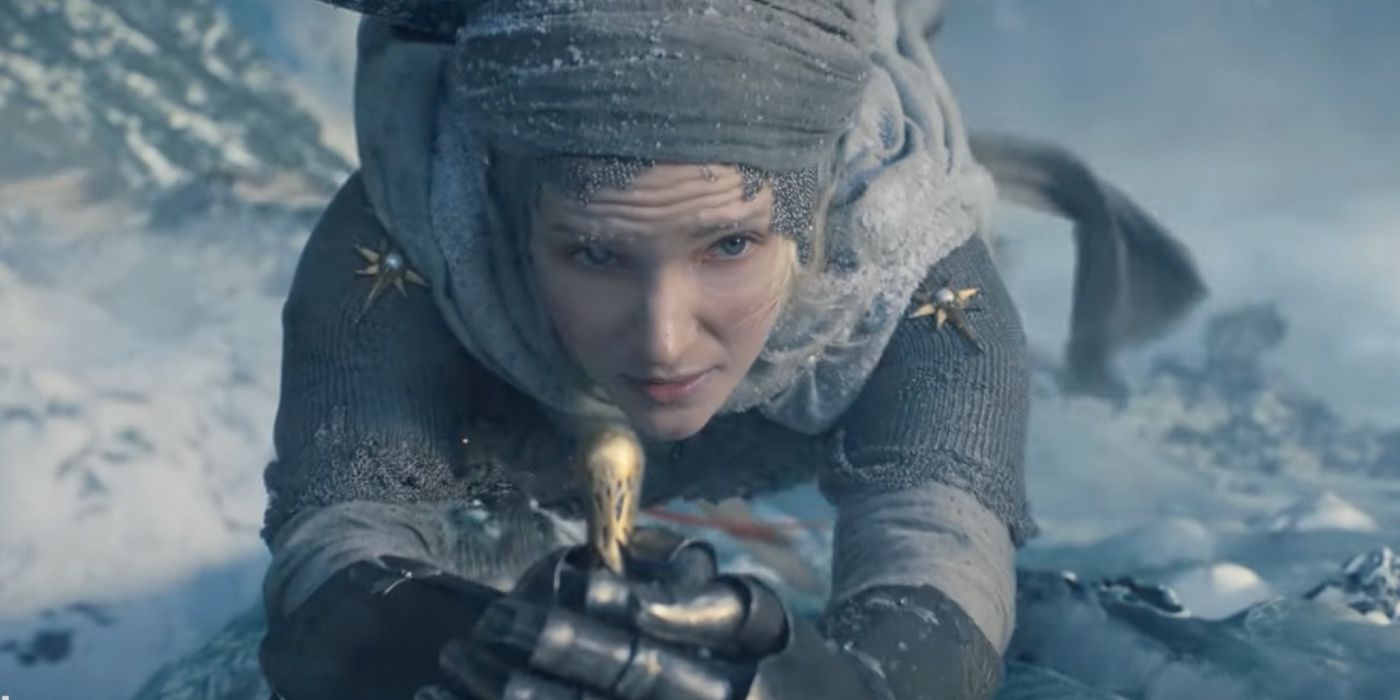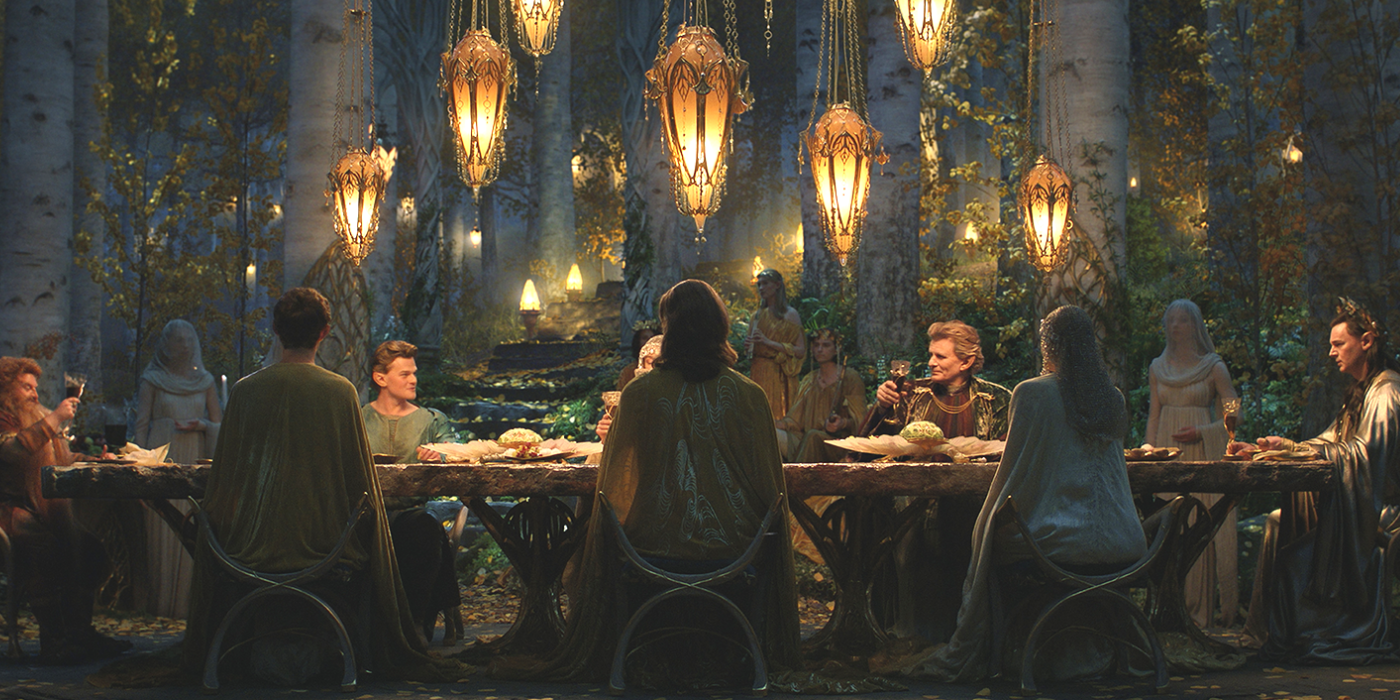What is Lord of the Rings: The Rings of Power actually based on, and does the story pull from any books by Middle-earth's creator, J.R.R. Tolkien? When Peter Jackson decided to make cinematic history by turning The Lord of the Rings into a trio of movie masterpieces, he faced a daunting task that many directors before had deemed impossible. While translating Tolkien's most famous novels into a convincing live-action trilogy was undoubtedly a tall order, Jackson's quest was clear - adapt three mammoth fantasy movies from three mammoth fantasy books. He then did something similar with The Hobbit but spun out a single book into a trilogy of movies.
Peter Jackson adapted The Fellowship of the Ring, The Two Towers, and The Return of the King directly. Even with certain embellishments from wider Tolkien lore (and, indeed, creations of his own), Jackson's The Hobbit trilogy still pulls predominantly from Tolkien's book of the same name. Amazon's upcoming TV series, Lord of the Rings: The Rings of Power, however, isn’t a “direct” Tolkien adaptation. The Rings of Power draws from several Lord of the Rings texts to tell the story of a specific point in Middle-Earth’s history. Peter Jackson also isn’t involved, but that’s not why Amazon’s new LOTR show takes a different approach. The Rings of Power is taking what are, essentially, Tolkien’s world-building ideas and deep lore Middle-Earth books like The Silmarillion, many of which he never intended to flesh out into full stories, and turning them into a tangible narrative for the small screen.
The Rings of Power shall cover the ending of the Second Age of Middle-Earth. This period has been glimpsed on-screen before, in the Lord of the Rings flashback scenes depicting the final battle between Sauron and the alliance of Men and Elves. As the title suggests, Lord of the Rings: The Rings of Power tells the story of Sauron’s ascendency to the Dark Lord of Mordor, forging the rings of power, and (most importantly) the creation of The One Ring. J.R.R. Tolkien has written in broad strokes about these events and how they fit into the Middle-Earth chronology, but never before has Middle-Earth’s Second Age been explored with the same level of personal character-driven intimacy as the events of the Third (i.e The Hobbit and The Lord of the Rings). This is all set to change with Lord of the Rings: The Rings of Power though, which will for the first time show the rise and fall of Sauron in the Second Age from the perspective of the people of Middle-Earth, rather than as a deep-yet-detached synopsis of historical events. Here’s everything you need to know about how Lord of the Rings: The Rings of Power as adapting J.R.R. Tolkien’s writing, including the infamously difficult-to-read Silmarillion.
Rings Of Power Source Material The Silmarillion Explained
Eschewing traditional narrative style, The Silmarillion isn't strictly a novel à la The Lord of the Rings and The Hobbit but a collection of fictional histories set within Middle-earth and beyond. The part-textbook-part-bible contains tales of Númenor, Sauron, Finrod, Gil-Galad, and Valinor – all of which could have been adapted for The Rings of Power's narrative. Some speculated that The Rings of Power could even take an anthology approach, with scenes and perhaps even entire episodes adapting Tolkien's words from The Silmarillion as closely as Peter Jackson adapted the Fellowship entering the Mines of Moria or Gandalf the White's dramatic Fangorn Forest entrance.
However, The Rings of Power trailers suggest that it will focus on a specific history from the millennia-spanning Silmarillion – the end of the Second Age of Middle-Earth. This is unsurprising since it's the part of Middle-Earth's pre-The Hobbit history with which audiences will be most familiar. The Rings of Power will also draw on additional texts though, as comprehensive as The Silmarillion is. In his published letters to Humphrey Carpenter, Tolkien revealed much about Middle-Earth's pre-Bilbo years in Unfinished Tales of Númenor and Middle-Earth, as well as in the 12-volume The History of Middle-Earth. Lore from these sources will also find their way into Lord of the Rings: The Rings of Power. While Amazon's series is perhaps as close to a show or movie of The Silmarillion as Tolkien fans have seen so far, it shouldn't be considered a straight-up page-to-scene adaptation.
That's especially true considering the volume of new material The Rings of Power is conjuring up. Tolkien doesn't cover Middle-earth's Second Age in anywhere near the same minute detail as The Lord of the Rings and The Hobbit, so while Peter Jackson had a detailed blueprint to work from, Amazon had more of an uphill challenge. Tolkien had provided them with the dates, times, and events, but little was known about who characters like Isildur, Elrond, and Galadriel are as people. He also didn't mention many individuals beyond Kings, Queens, and commanders of armies. The Rings of Power's trailers show that Amazon has added much to Middle-Earth's canon where its characters are concerned, with a very different Galadriel now dubbed "Commander of the Northern Armies" and a host of new faces such as Halbrand, Disa, and Arondir. The Rings of Power is, in all truth, adapting only a tiny fraction of The Silmarillion, but it's expanding that tiny fraction into a fully fleshed out and almost completely new story, similar to 300's approach with the real-life Battle of Thermopylae.
Why Rings Of Power's New Approach Is Risky But Promising
Lord of the Rings: The Rings of Power is taking a completely different approach than Peter Jackson in how it's adapting J.R.R. Tolkien's material. Amazon is without a doubt taking a gamble – the LOTR fandom is one of the world's oldest and already had diehard purists decades before Jackson was even born, let alone when The Fellowship of the Ring was released in 2001. Jackson's six movies were well-received overall, but they also meant that LOTR fans have even greater expectations in the 2020s. Faithfulness to the source material is only one side of the coin now. Because of Peter Jackson's skill as a movie director, on-screen Tolkien adaptations have to be good movies or shows in their own right. Amazon could make a direct adaptation of The Silmarillion, but it would be boring – bordering on unwatchable. There's a reason the book has gained a reputation as being nigh-impenetrable by all but the most devout Tolkien scholars. It's more a textbook than a story, and despite what some staunch advocates of Tolkien purity believe, it wouldn't make for good viewing.
Amazon's approach might hone in, deviate, and then build upon The Silmarillion and Tolkien's appendices in ways portions of the fanbase find hard to swallow, but it's for a good reason. Amazon's goal isn't to make a dry series that keeps a few dozen Silmarillion traditionalists happy — they want to make a LOTR series that rivals Game of Thrones and makes the Middle-Earth IP a profitable franchise again. Expectations aside, Amazon is a business, and The Rings of Power is a product. It has to be enjoyable, watchable, and – above all – tell a cohesive story. This would be impossible without Amazon's new approach, and as revenue-driven as the initial decision to deviate from Tolkien's text might be, fans will ultimately be better off for it.
The new-old Middle-Earth in The Rings of Power already looks incredible in existing footage. Amazon has created a Second-Age Middle-Earth that appears as rich, deep, and detailed as the version seen in the Lord of the Rings movies. They've taken the gaps left in Tolkien's original text and filled them, creating an almost-new story that works much better as a TV show than a direct Silmarillion adaptation ever could. LOTR characters like Galadriel, Isildur, and Sauron have long histories in Tolkien's writing but aren't exactly well-rounded (especially not when compared to Sam or Frodo). Amazon had a lot of leeway, and they've used it to create faces and personalities for names that, in some cases, only appeared as footnotes on a single page. The new characters will also make a fine addition. Supporting characters like Merry and Pippin are essential to The Lord of the Rings, and it's a near-certainty that when Lord of the Rings: The Rings of Power concludes, the new additions will be just as integral as established characters like Elrond.

.png)

